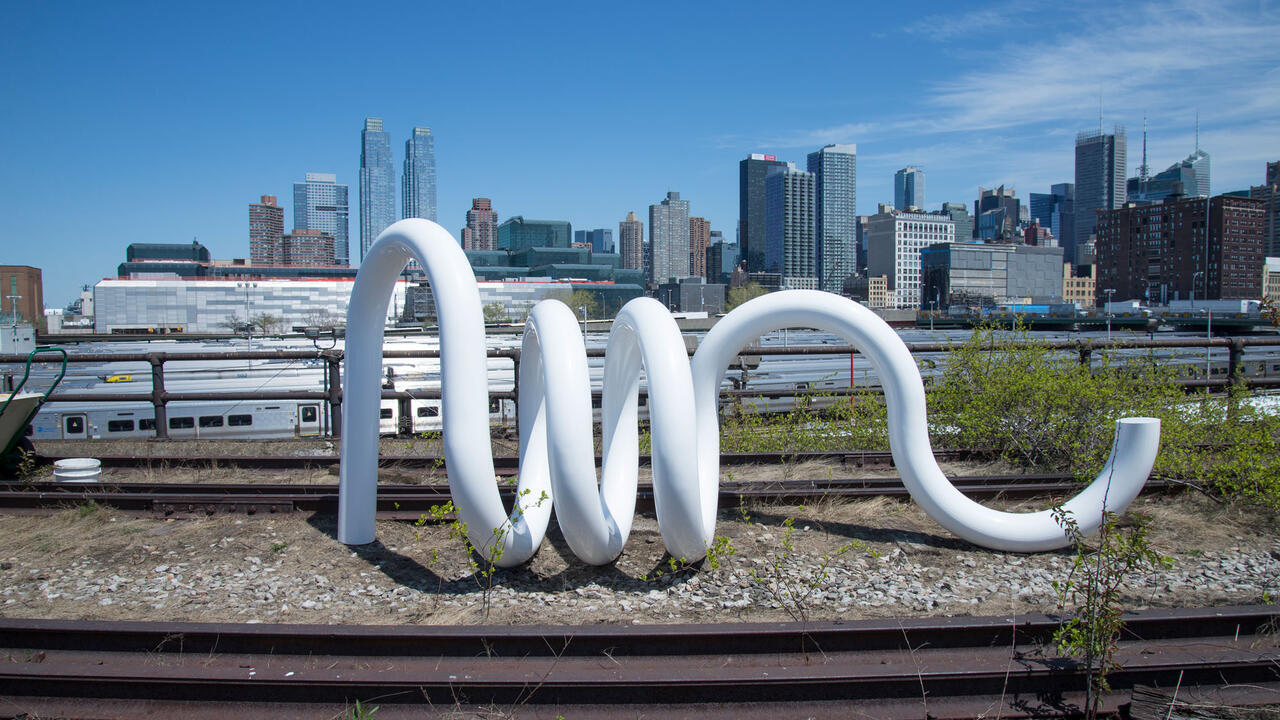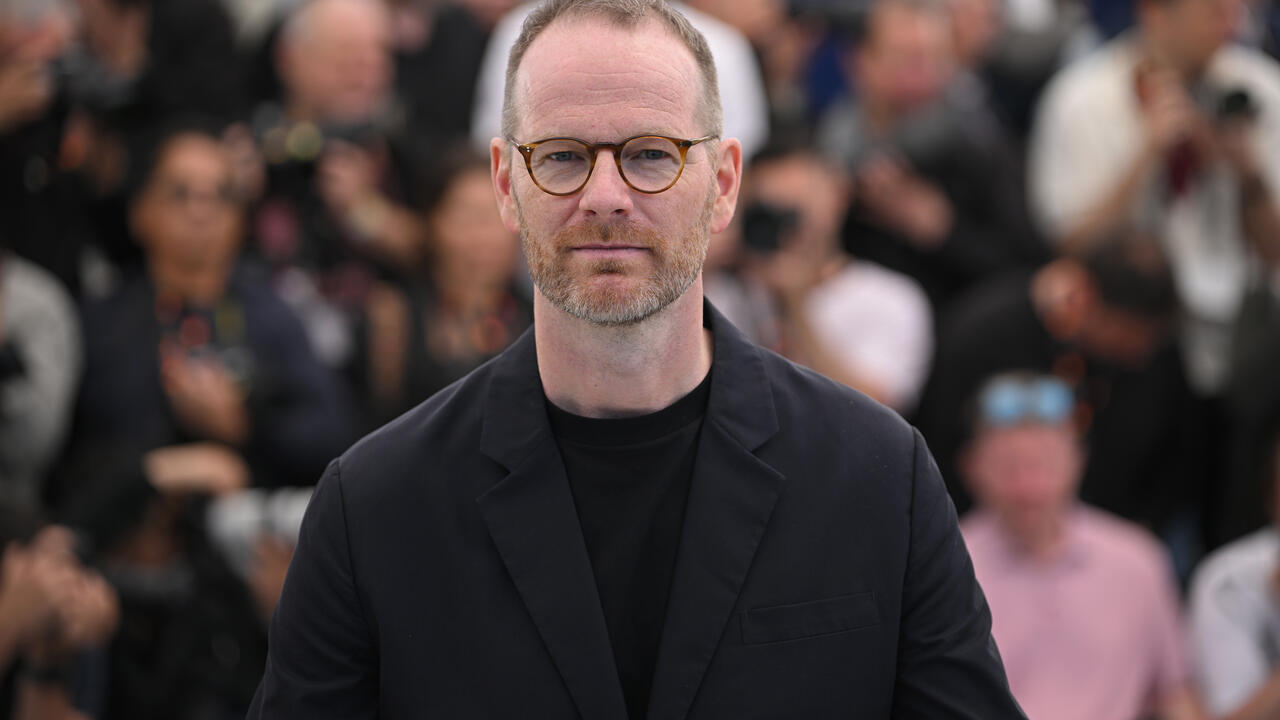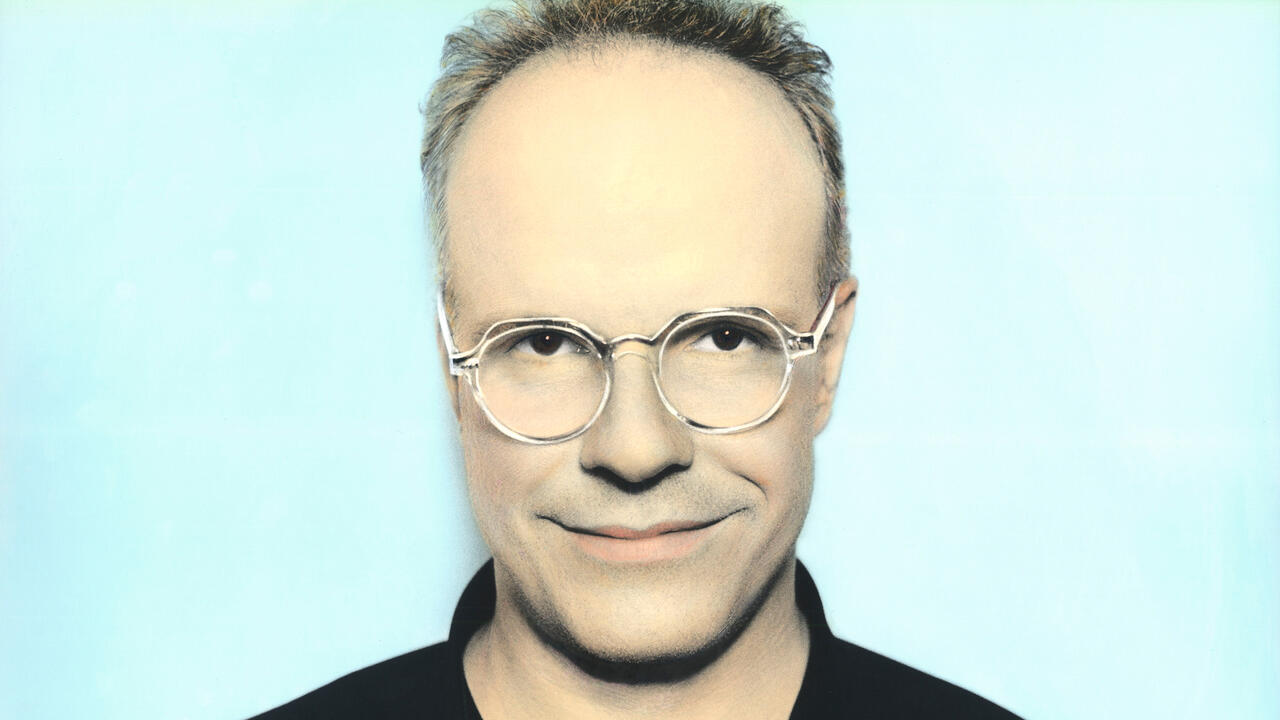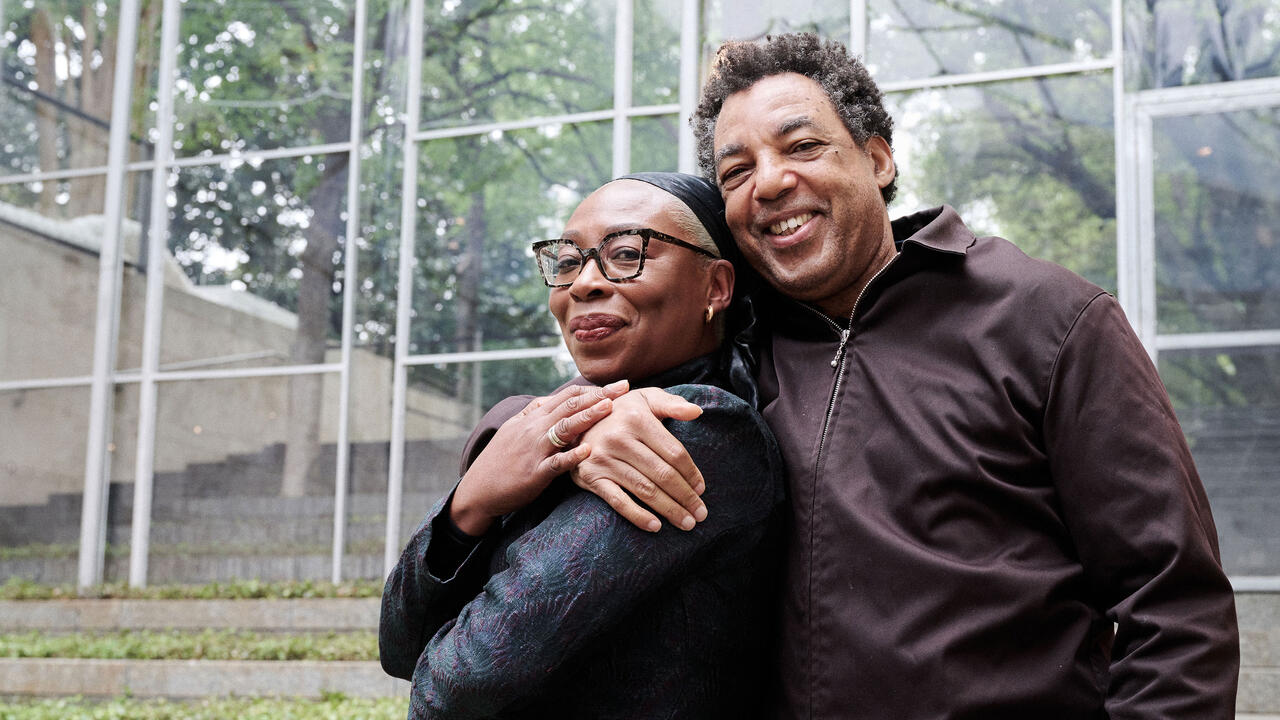‘There is No Such Thing as Documentary’: An Interview with Trinh T. Minh-ha
The radical filmmaker, teacher and writer talks essentialism in identity politics and why her films are neither documentary nor fiction
The radical filmmaker, teacher and writer talks essentialism in identity politics and why her films are neither documentary nor fiction

Trinh T. Minh-ha’s first film, Reassemblage (1982), is in some sense a work of ethnographic cinema. Shot in Senegal, it is filled with scenes of daily life, especially of village women. Yet, from its very title, which summons the fragmentary and constructed, Reassemblage signals that it will be no conventional documentary. Disentangling sound from image, foregoing an authoritative voice-over and relinquishing the long takes of an observational style for a disjunctive montage aesthetic, Trinh overturns the conventions traditionally employed in anthropological filmmaking. Rather than a work of ethnographic cinema, Reassemblage is better understood as anti-ethnography – a film that reflexively dismantles the objectification and exoticization of otherness which mark the ethnographic and colonial projects alike.
In the films, installations and books she has produced in the years since Reassemblage, Trinh has continued in this spirit, deconstructing claims to identity, presence and authenticity, holding them to be the product of patriarchal and colonialist epistemologies. Whether in the re-enactments of Surname Viet Given Name Nam (1989) and the poetic theorizing of Woman Native Other: Writing Postcoloniality and Feminism (1989), or in her more recent turn to exploring digitization and climate change, Trinh insists on dislodging the illusory purity of inherited categories to make way for the hybrid and in-between. Crucially, this cross-disciplinary practice is not one of simple negation: Trinh breaks down dominant languages in order to imagine other forms of relation and expression.
Her latest film, Forgetting Vietnam (2016), crosses the country of her birth from north to south, confronting changing imaging technologies and the ambivalence of modernization along the way. Through landscapes, history, folklore and popular songs, this essayistic travelogue commemorates both the passing of Trinh’s father and the 40th anniversary of the end of the Vietnam War. The work possesses a lyricism not present in Reassemblage, but Trinh’s words from the earlier film resonate in it even more strongly: ‘Reality is delicate.’

Erika Balsom You’re well known as a documentary filmmaker and have written an influential critique of the genre; you have even said that there is no such thing as documentary. Could you elaborate?
Trinh T. Minh-ha I don’t think of my films in terms of categories – documentary, fiction, film art, educational or experimental – but rather as fluid, interacting movements. The first is to let the world come to us through an outside-in movement – this is what some call ‘documentary’. The other is to reach out to the world from the inside out, which is what some call ‘fiction’. But these categories always overlap. I wrote ‘there is no such thing as documentary’ because it’s illusory to take the real and reality for granted and to think that a neutral language exists, even though we often strive for such neutrality in our scholarly work. To use an image is to enter fiction.
EB Another word that you often critique is ‘authenticity’. Today, authenticity tends to be fetishized in contemporary art in a very uncritical way. The same is true, to some extent, in mass culture. There’s even a book by business management writers B. Joseph Pine II and James H. Gilmore called Authenticity: What Consumers Really Want (2007). What, in your opinion, is wrong with it?
TM Firstly, it has to do with power relations in knowledge: authenticity is always defined by the one who consumes the so-called authentic. It’s almost always construed for the other. And, secondly, if the other is claiming it for themselves, such authenticity could either be a reaction to or a way of internalizing dominant values. That word still righteously circulates in the documentary milieu today with regards to films made on and from Africa, for example.
I made a film on Vietnam (my so-called native land or birth culture) titled Surname Viet Given Name Nam. You can tell immediately by this title that a national identity is not given but construed according to circumstances and contexts (here in its gender politics) – and the more you look into what you think is unique to your culture, the wider it gets. What is thought to be typically Vietnamese turns out to be not so typical after all. In the series of names shown and historically used to refer to Vietnam throughout the centuries, one can acutely discern the diversely political periods of colonization and foreign rules. One sees how the country’s identity is, in reality, a multiplicity and an assemblage – constantly being construed in the present. What is conventionally understood as authentic is highly questionable because you can only be authentic if you confine yourself to locking doors and putting up fences.

EB Instead of the authentic, you’ve always looked to the hybrid, the in-between or the liminal. Recently, we’ve seen a return to identitarianism on the right and, on the left, a claiming of fixed and pure identity categories as the grounds for political action. Have you also noticed this re-assertion of the purity of identity? Do we need to continue to make a case for the hybrid?
TM I see this very strongly in our quotidian, but also among students in some of the departments in which I teach, like Gender and Women’s Studies and Rhetoric, or those that I’m affiliated with, such as Ethnic Studies, African-American Studies and Performance Studies. Amazingly, we went through a period in which we were really putting to task everyone who tried to assert forms of essentialism, to advocate authenticity or to uphold fixed boundaries in terms of identity.
I went through this myself when I wrote Woman, Native, Other. I was very critical then of such rigid enclosures. But when the book came out and was discussed widely among people who claimed authority on identity politics, I could see how we needed to be more generous in effecting changes.
Even as we criticize, we should take into consideration the circumstances that lead someone to assume a black-and-white oppositional identity, especially among peoples of colour. But to see it coming back today with a vengeance on both the left and the right, through the rise of white nationalists who are now given full reign under President Donald Trump to vent their racism and sexism, is very sad.
Alongside this renewed hardening of essentialism in identity politics, we also have the affirmation of terms like ‘intersectional’, for example, among feminists of colour. This arose from a strong commitment to understanding how, in relations of power, the embedded questions of gender, ethnicity, race, class, sexuality, religion and culture overlap and intertwine. This approach was already at the core of my book Woman, Native, Other in the early 1980s and the term is now popularized among feminists when referring to a more diverse and inclusive praxis. It’s not new, but the fact that ‘intersectional’ has received widespread attention today could perhaps help the struggle to regain momentum among intellectuals, artists and activists alike.
EB In your first film, Reassemblage, the voice-over declares: ‘I do not intend to speak about; just speak nearby.’ What does this mean?
TM If you are close to someone, like your lover or your mother, and you make a film about them, how would you show and tell? It’s quite difficult. Every time you speak about them, you can hear the other person’s voice challenging and protesting: ‘No, I’m not like that. What’s wrong with you?’ My mother, for instance, would certainly not recognize herself; she would deny, talk back and try to rectify.
When you decide to speak nearby, rather than speak about, the first thing you need to do is to acknowledge the possible gap between you and those who populate your film: in other words, to leave the space of representation open so that, although you’re very close to your subject, you’re also committed to not speaking on their behalf, in their place or on top of them. You can only speak nearby, in proximity (whether the other is physically present or absent), which requires that you deliberately suspend meaning, preventing it from merely closing and hence leaving a gap in the formation process. This allows the other person to come in and fill that space as they wish. Such an approach gives freedom to both sides and this may account for it being taken up by filmmakers who recognize in it a strong ethical stance. By not trying to assume a position of authority in relation to the other, you are actually freeing yourself from the endless criteria generated with such an all-knowing claim and its hierarchies in knowledge. While this freedom opens many possibilities in positioning the voice of the film, it is also most demanding in its praxis.

EB In your essay ‘No Master Territories’ (1991), you reference Audre Lorde’s idea that ‘the master’s tools will never dismantle the master’s house’. You write: ‘How many already have been condemned to premature deaths for having borrowed the master’s tools, and thereby played into his hands?’ This is striking to me because I think that borrowing the master’s tools is actually a very common strategy in a lot of contemporary practice. I’m thinking especially of artists dealing with digital culture who hyperbolically replay certain modes of visuality, attention and experience associated with the internet rather than try to forge any alternative to them. You insist on the need for new languages. Why is this?
TM In every film I’ve made, whether it relates to my own culture or to another, the commitment to speak nearby has been extremely challenging. When you do not want to speak as a ‘knower’, you talk with a lot of blanks and holes and question marks. Perhaps you have no desire to fix meaning, which may sometimes lead you to a place of nonsense. But, in language, even when you work with nonsense, people find meaning. In my writing and film practice, I work simultaneously with sense and nonsense and the new is often made to fare with the very old. It is naive to think that we can simply raze to the ground everything we have learned – which is a modernist delusion. Once you are colonized, it’s not as if you can simply reject everything the colonizer has brought in. We unavoidably import, internalize and adapt, often unintentionally, the master’s tools and values. However, to put them to use when necessary is very different from unquestioningly letting them drive our political outlook on life.
In homage to Frantz Fanon, one can say there are three phases marking the struggle of the colonized and the marginalized. The first is that of assimilation – to survive, the dominated has to assimilate. The second is that of rejection – the younger generation often rejects with anger whatever e. /their parents have assimilated, for example. The third phase, the most challenging one, is that of speaking ‘nearby’, with, across and in between: it is the phase of struggle. You can borrow the master’s tools, as long as you know that you are merely borrowing for strategic purposes.
EB You often embrace the faltering of meaning. How are nonsense, confusion or insignificance important to a postcolonial feminist politics?
TM I frequently tell my students to voice their confusion in class – we are afraid to show our confusion in public, but much depends on how we respond to it. Confusion can tell us we are no longer satisfied with something that we were previously comfortable with and can be a tool that is very nurturing and rejuvenating if we do not try to escape it. Nonsense, blanks, holes and gaps could be manifestations of confusion but they also open up to new possibilities if we don’t try to fill them with the pre-known and the familiar.
EB This idea of confusion recalls Surname Viet Given Name Nam. In that film, you drew on Mai Thu Van’s Vietnam: un peuple, des voix (Vietnam: A People, Voices, 1992) a book of interviews conducted in Vietnamese and published in French. You then translated these texts into English and had non-professionals re-enact them. It seems that, in this process of translation, there’s always an intentional betrayal of an origin or of a stable meaning.
TM It is also a deliberate gesture to address the question of translation itself, or the question of language. Unlike Reassemblage or Naked Spaces: Living Is Round (1985), the use, in excess, of language in Surname Viet Given Name Nam highlights how verbal language can be destabilized despite its very dominant presence on film – how it can speak volumes about the talker rather than the other way around. In assuming we know all about our own cultures, we often take for granted that being an insider entitles us to speaking and asserting meaning with authority.
Language used in excess, both via the spoken and the written word, has an effect almost like that of memory: something that is triggered despite yourself. And knowledge in its ready-made assertions makes it very difficult to come back to a place of beginner’s wonder – unlike the outsider who can often encounter things and events afresh, as if for the first time, and in silence (as I was in African cultures). But how to become a stranger in your own culture, your own territory, your own home? It’s a real challenge to begin anew.
Nonsense can come with an overload of meaning: you can hear the sound of a word rather than its intended meaning. I could say ‘speak about’ and you would hear ‘kabout’. People have discussed at length this ‘speaking about’ in relation to ‘speaking nearby’ but nobody has commented on the repeated ‘kabout’ in Reassemblage. In Naked Spaces, I stutter on the word anthropology: the ‘ant-ant-anthropological’. I could have edited that out but I left it in because that was what happened in that specific moment of naming. I tried several times to say that word and I couldn’t. And this sudden stuttering tells you volumes about how one could relate to that word and what it represents.

EB You’ve published poetry as well as theoretical works, interviews and texts related to your films. Do you make distinctions between your writing, filmmaking and music?
TM I don’t think of them as separate categories, but they have their own specificities. When you work with music, there are constraints that are unique to the medium, as with film and writing. I never think in terms of which is better: the way the work comes to me dictates whether it should be a film, a book or a music composition.
It has always worked against me to have multiple areas of activity because people find it hard to classify. It’s difficult, for example, for me to be accepted as a ‘normal’ academic – not only because I have a parallel career as a filmmaker and artist, but also because my published work spans literature, film, art, music, philosophy and anthropology. I like to use the example of typing. When you type with eight fingers, it seems very impressive. But someone who types with two fingers can also go very fast, and sometimes even faster than a person who types with eight. For me, it’s not someone’s many talents that are impressive, but how they use them.
EB In Forgetting Vietnam, your most recent film, you use three video formats: Hi8, SD and HD. In the past, you’ve made 16mm and 35mm films. Technological change is in evidence across your practice and you’ve also written quite extensively about the digital. I get the sense that you do not conceive of digitization melancholically, as a loss of tactility or of historicity.
TM If I really wanted to indulge in melancholia, I would refuse to do anything digital and would continue to torture myself to find funds for 16mm and 35mm films. This was partly the case with Forgetting Vietnam, a project I began in 1995, when I went back 20 years after the end of the war.
I was shooting with Hi8 video, which was the latest mobile technology at the time. In 2012, I returned to Vietnam to complete the shoot and it was the advent of HD video. I had a choice: I could have just thrown away everything I did in 1995, because the system of film festivals, art exhibitions and television broadcasting does not really like Hi8 – they consider it to be cheap and poor in resolution. But, from an independent filmmaker’s perspective, Hi8 gives you a kind of saturated colour that is unique to the medium: a grainy, painterly quality that you don’t have in HD. HD is trying very hard to look like film (when it doesn’t claim to surpass film) and it does succeed to a certain extent. It’s a question of letting the old and new or low and high interact in their specificities, like I did in Forgetting Vietnam.
Politically, such a choice has been very important. Making this film on Vietnam, I could see how the country is acutely struggling with low and high technologies and how the question of preserving the ancient while adapting to the modern is being played out in daily life. However, with new technologies, the old and the new are deliberately made to be incompatible. Modernity’s progress works by making every step forward a way of disabling and discarding older versions of the system, constantly forcing people to ‘upgrade’ and hence to consume forevermore. Equipment that is just three-to-five years old is not ‘supported’ anymore.
This is a dominant mindset in which incompatibility and mutual exclusion ultimately define the relations between low and high. Being critical of such an ethos, you could try a different ground for creativity and focus, for example, on assemblage or co-formation. In Forgetting Vietnam, everything is said to begin with the ‘two’, the ability to hold both: the forces of mountain and water, of solid and liquid, low and high, old and new, north and south; the movement of ascending and descending, or of leaving and returning. These are non-binary twos, the twos of multiplicity upheld in some of the pioneering feminist and trans writings.

EB And there are also memory and forgetfulness.
TM Memory and forgetfulness are at the core of the project. Remembering is not opposed to forgetting. Again, this has much to do with the work of feminists, who have written at length about the ‘two’ as differentiated from the imperial ‘one’ with its mono-subjective patriarchal system of domination, subordination and exploitation. In exploitation, one works at being on top: being the only oneto do this or the first one, unique, the biggest, strongest and so on. This kind of mentality has curtailed our freedom. Democracy has to be able to ‘hold both’. When I included the two forces in Forgetting Vietnam – the descending and the rising dragon – it was in order to manifest the ‘between’ – between water and earth – to hold the two in this betweenness, rather than to oppose them and fall back on a binary system that remains divisive at its core. Such is the schismatic political situation in the US today.
EB One of the pairs that you balance in Forgetting Vietnam is the land and the water. I was very interested in this ecological turn within your practice – one of many threads that we find throughout the film. What do you think feminism contributes to questions of environmentalism, ecology or the anthropocene today? And, to reverse the question: what do ecology and the anthropocene bring to a decolonial feminist practice?
TM The answer is related to what I said before about the many tools at our disposal and the forces of nature. When you do not conceive of these in binary opposition, but rather as forces that co-exist and mutually sustain one another, then the human is not opposed to the non-human. Your comment on ecology relates to my latest book, Lovecidal: Walking with the Disappeared (2016), which addresses the climate disasters we are now experiencing. Something very specific led me to Forgetting Vietnam when I began the project in 1995: I was focused on the figure of a woman rower who takes people from one shore to the other. You experience this physically or spiritually – the shore can be that of life and death. The shore can be something very small, defining your ego or your small self, or something very large, where you are in tune with the world. It is very telling that in Vietnamese popular sayings and songs, as well as in legends and myths, the rower is, most of the time, a woman.
You can still recognize this starting point in the film; the woman is in the songs and is very prominent at the end. But, by the time I returned to the project in 2012, my father was very sick. And, in the process of completing the film, I lost him. The journey toward his death and his passing opened a door for me to what I call the non-human. Not that it was not there before, but his departure made it very intense for me. So, the film shifts toward Vietnam as a body of water. This is evidenced in the thousands of rivers and waters that criss-cross the country and the three huge rivers that define it: the Red River in the north, the Perfume River in the centre and the Mekong or the Nine Dragon River in the south. This water flows deep and wide, from the Tibetan Plateau to the South China Sea.
In the process of working with Vietnam as primarily water, the two forces catching my eye in the film are the sea and the boat: again, the human and the non-human. Here, it’s not the person in the boat – neither the boater nor the boat passenger – but actually the boat itself and the sea. It’s a way of shifting our attention to the fact that we are not the centre of the world. Sometimes, viewers tell me they can’t identify with the people in the film, which turns out to be mainly a reaction to the absence of interviews and personal stories. But this film is not about an individual story or about individual lives as representative of the culture – I was not presenting characters or the story of a few selected individuals. It’s very much about water (or Nuócthe name that also refers to ‘country’ in Vietnamese) and the ‘water way’ in relation to the forces of nature as they define Vietnam, Her people and Her culture.
EB What are you working on at the moment?
TM I have six film projects I’d like to develop but have no funding as yet. Making a film can require a full year of work in terms of research, shooting, writing and editing; but fundraising can take years and it’s a real struggle. To mention just a few projects: one that I am making in collaboration with a group of Swedish and Vietnamese musicians, The Six Tones, concerns immigration as manifested through daily soundscapes and musicians’ sound interactions. Another project relates to the precarious culture of rural China, and a third one, also dear to my heart, concerns the art, architectureand culture of people’s built environment in Yemen.
Published in frieze, issue 199, November-December 2018, with the title ‘Reality is Delicate’.
Main image: Trinh T. Minh-ha, Forgetting Vietnam (detail), 2015–16, digital film still. Courtesy: © the artist and Moongift films






















